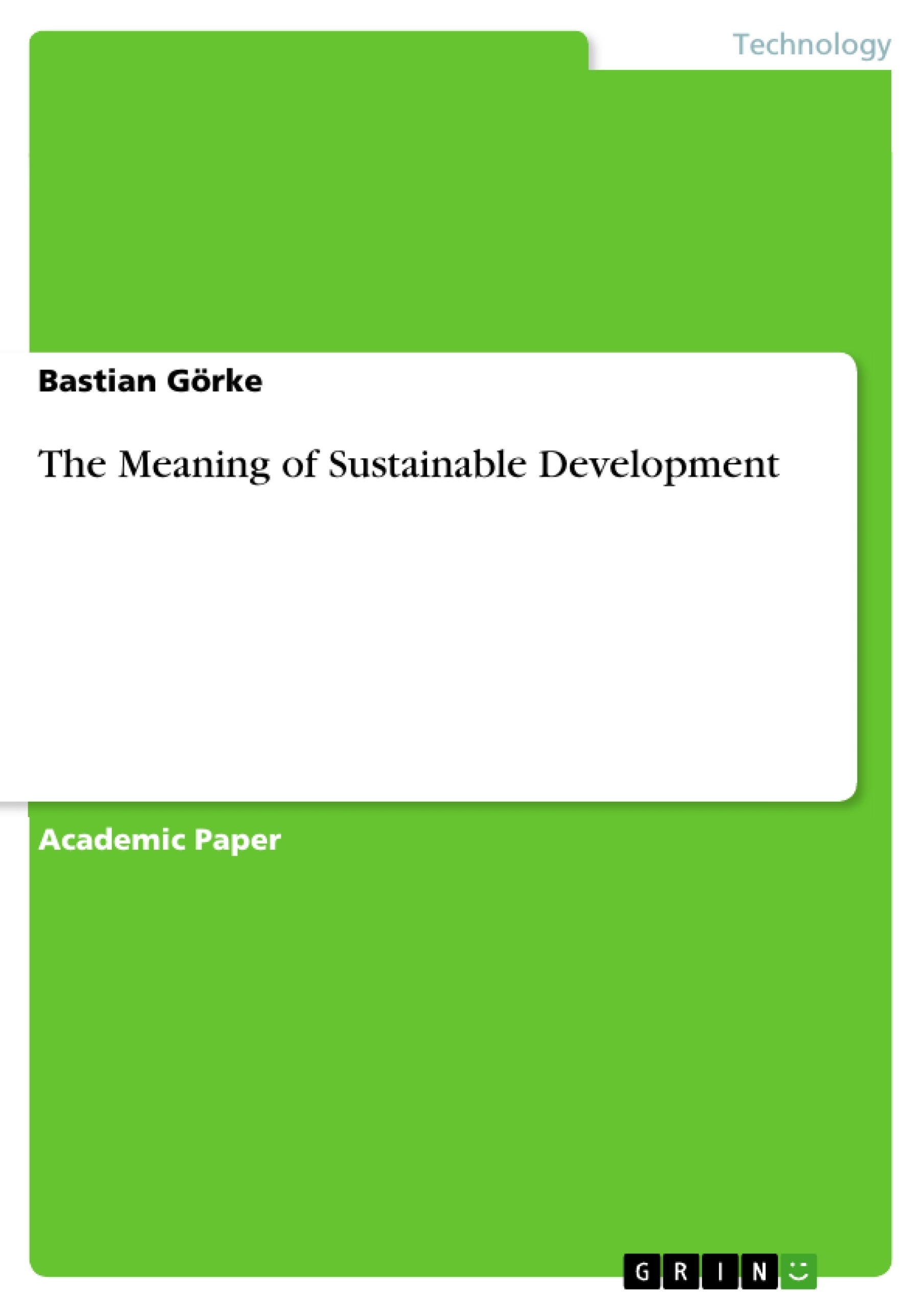To throw light upon some recent approaches to sustainability and sustainable development this essay compares and contrasts four documents of different authors.
Evolving from its roots in the 1972 publication "Limits to Growth" by the Club of Rome to its recent notions, sustainability and sustainable development have become elusive terms to describe in which way mankind can face the problems of the present and the future.
The findings of the Club of Rome and the Massachusetts Institute of Technology in 1972 indicated, that growth is limited by the finiteness of natural resources. However, growth was seen as an essential mean to alleviate inequalities throughout the world.
Table of Contents
- Evolving from its roots
- The common notion nowadays describes sustainable development
- Although sustainable development and sustainability have been well used expressions in recent discussions
- In "Putting Africa on a Sustainable, High Quality Growth path"
- In achieving the aims of social sustainability the IMF wants to focus its co-operation with the World Bank
- The Bank Fund co-operation is also present in the idea of environmental sustainability
- Economical stability is reported to be inevitable for a sustaining environment
- In comparison to this IMF document that deals with sustainable development in an operational way
- One of these documents is “Being and Havingness”
- Ehrenfeld categorises sustainability into three strategies
- In comparison to the document of the IMF that considers growth to be the impetus of ecological and social sustainability
- Whereas both the document of the IMF and the document of Ehrenfeld consider growth to be a concomitant of sustainable development
- There are basic similarities between Irvine and Ehrenfeld
- The roots of \"overdevelopment” can be found in “humanism”
- These problems of overpopulation, resource scarcity and a limited carrying-capacity “can be cured only by big reductions in the scale of human activity”
- Besides these three examples of documents dealing in an abstract way with sustainability and sustainable development the next document reveals a very practical issue of the matter
- To discuss the process of sustainable development it is no question of vital importance to define various solutions and aspects of its processes
- The fourth document therefore deals with the problems of implementing policies and ideas in communities' everyday work
Objectives and Key Themes
This essay aims to analyze and compare different interpretations of "sustainable development" by examining four distinct documents. The essay explores the origins and evolution of the concept, delving into its practical implementation and theoretical underpinnings.
- The evolution of the concept of sustainable development
- Different approaches to sustainable development
- The role of economic growth in sustainable development
- The importance of social and environmental sustainability
- The practical implementation of sustainable development
Chapter Summaries
The essay begins by tracing the origins of sustainable development back to the 1972 report "Limits to Growth." It then explores the seminal definition of sustainable development provided by the Brundtland Commission in 1987. The author then introduces the concept of the three sustainabilities: social, economic, and ecological.
The essay then analyzes the International Monetary Fund's (IMF) approach to sustainable development, specifically focusing on its efforts to promote sustainable growth in Africa. The IMF emphasizes the interconnectedness of economic growth, social development, and environmental sustainability. The IMF's approach emphasizes the role of economic growth in achieving social and environmental goals.
The essay then examines the document "Being and Havingness" by John R. Ehrenfeld. Ehrenfeld critiques the prevailing definition of sustainable development and advocates for a more holistic approach. He distinguishes between sustainable development and sustainability, emphasizing the latter's broader scope. Ehrenfeld proposes a practical framework for achieving sustainability, encompassing rationalistic, naturalistic, and humanistic strategies.
The essay then explores Sandy Irvine's argument that growth itself is unsustainable, as it depletes finite resources and creates a human-centric worldview. Irvine posits that humanism, with its emphasis on individual needs and consumption, contributes to the unsustainable nature of modern society.
Finally, the essay examines the practical implementation of sustainable development through community-based projects. It highlights the collective impact of local projects on socio-economic issues and environmental awareness.
Keywords
The essay centers around key concepts such as sustainable development, sustainability, economic growth, social sustainability, environmental sustainability, humanism, overdevelopment, and community-based initiatives.
- Quote paper
- Bastian Görke (Author), 2005, The Meaning of Sustainable Development, Munich, GRIN Verlag, https://www.grin.com/document/1030688




